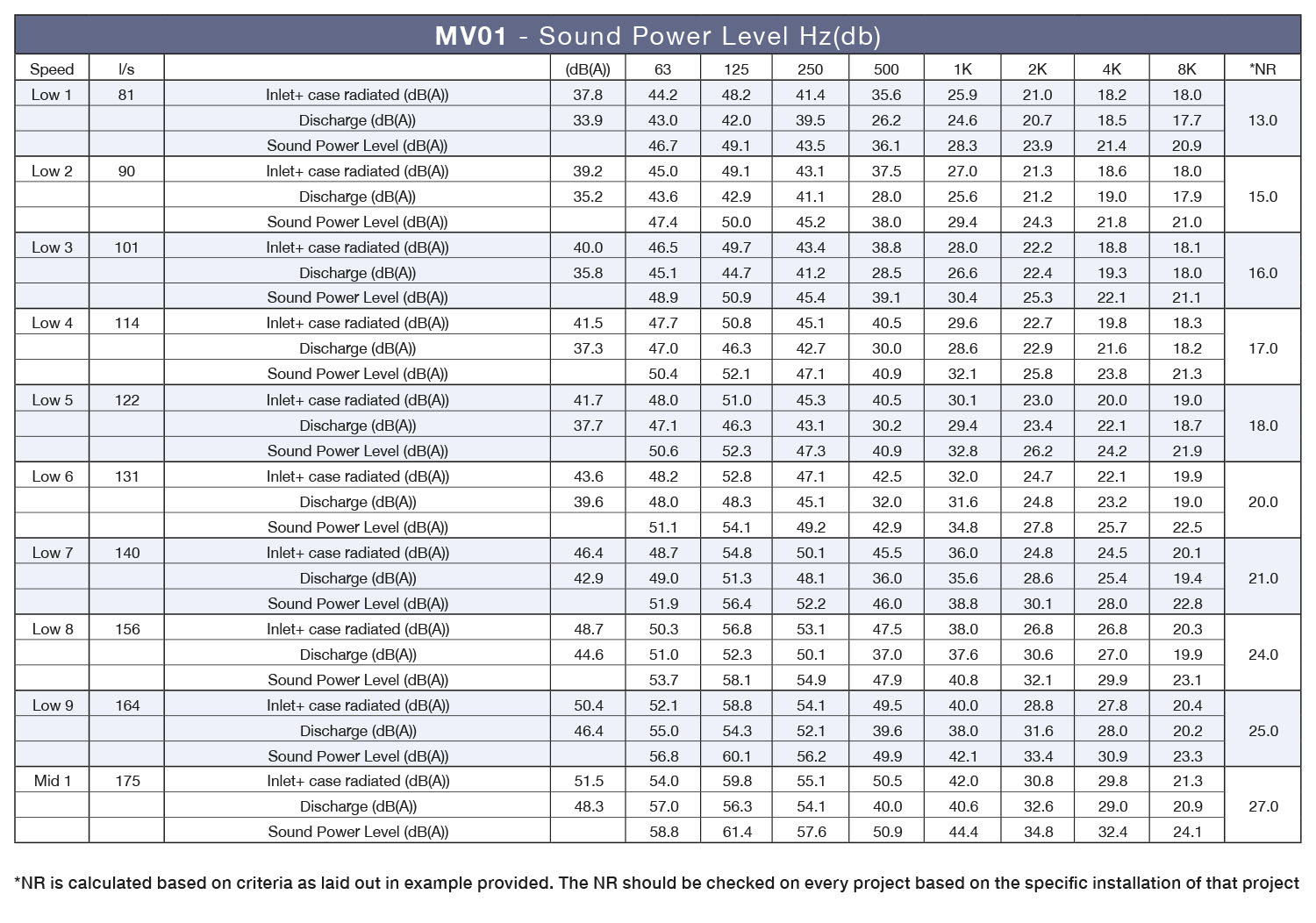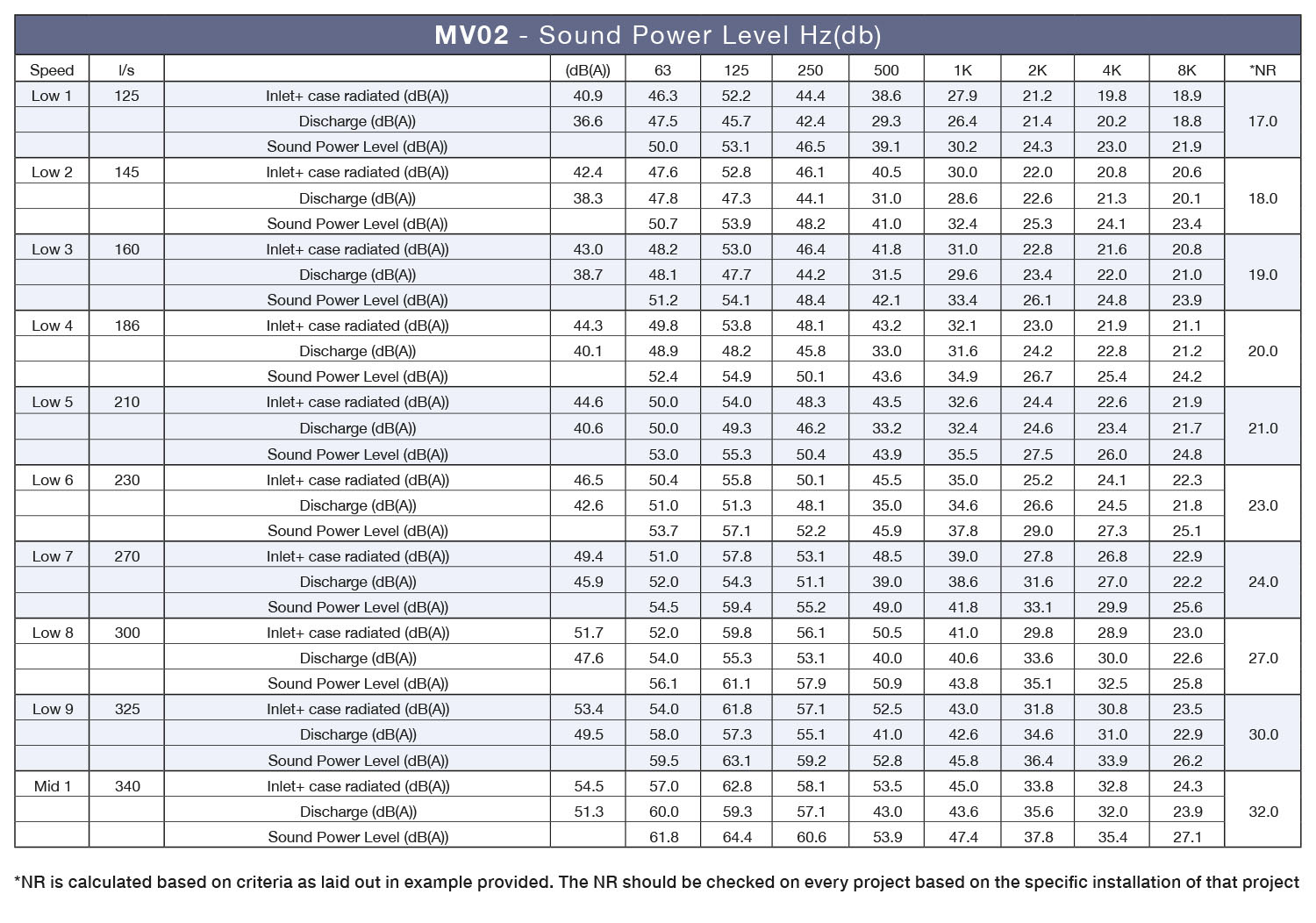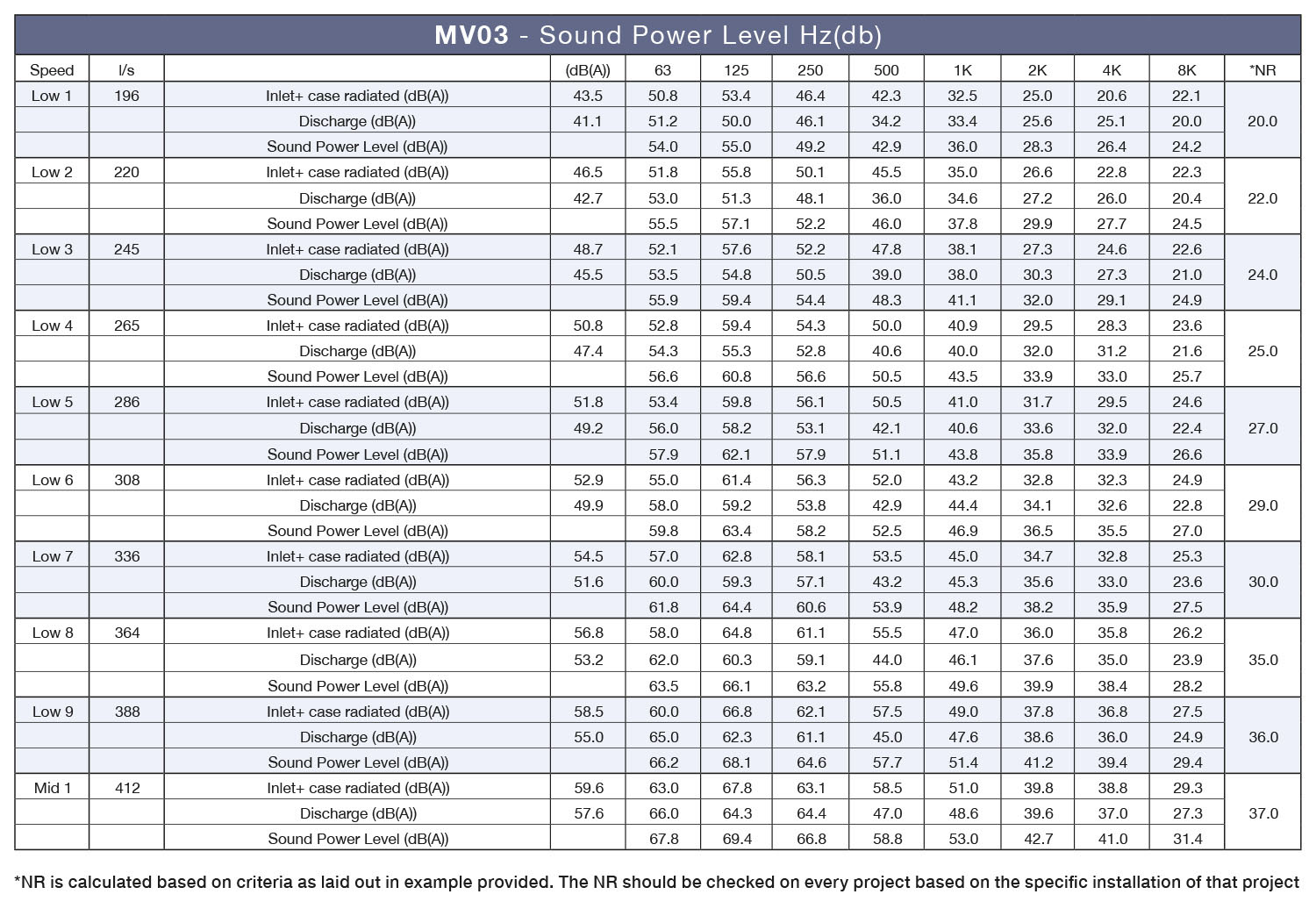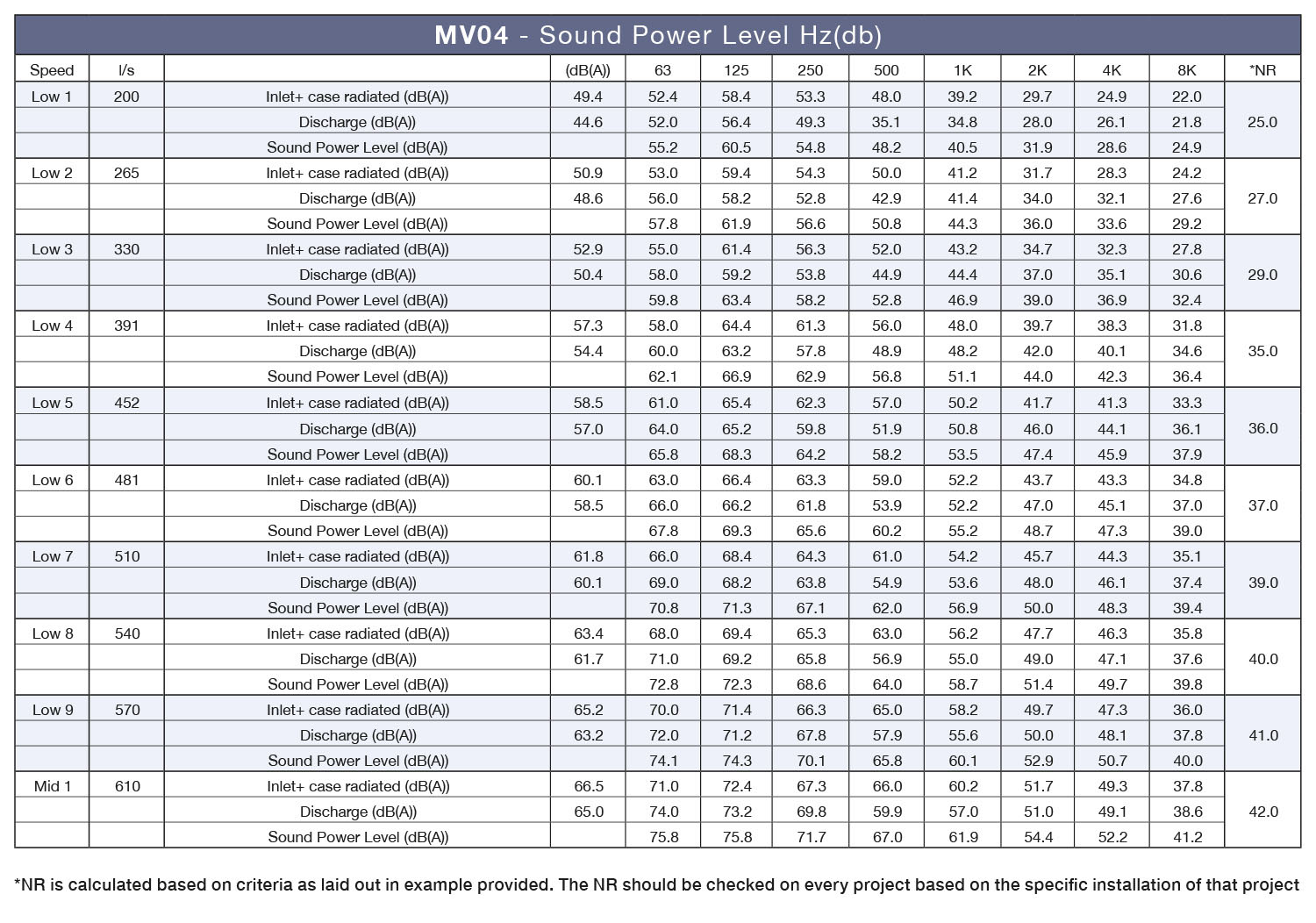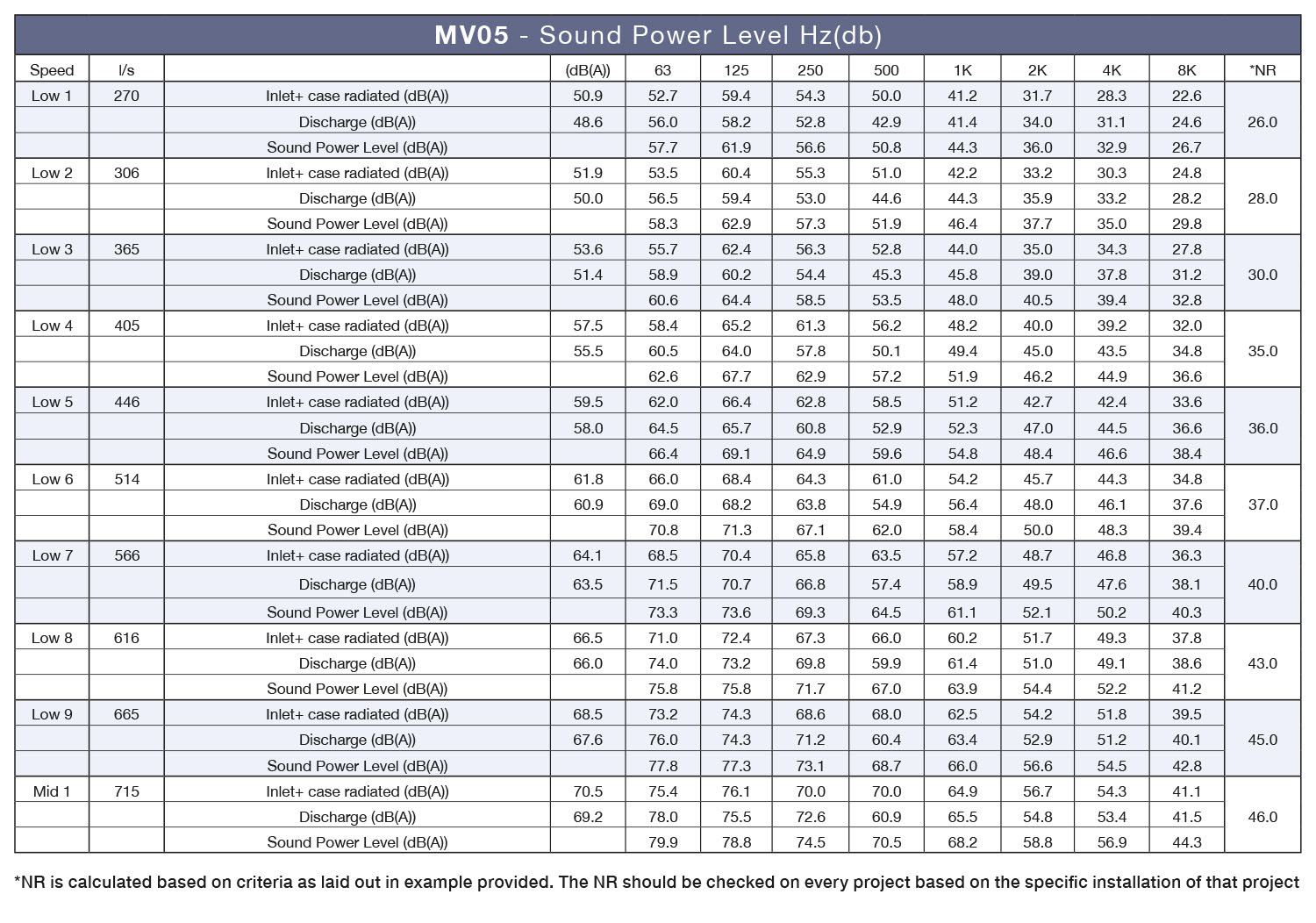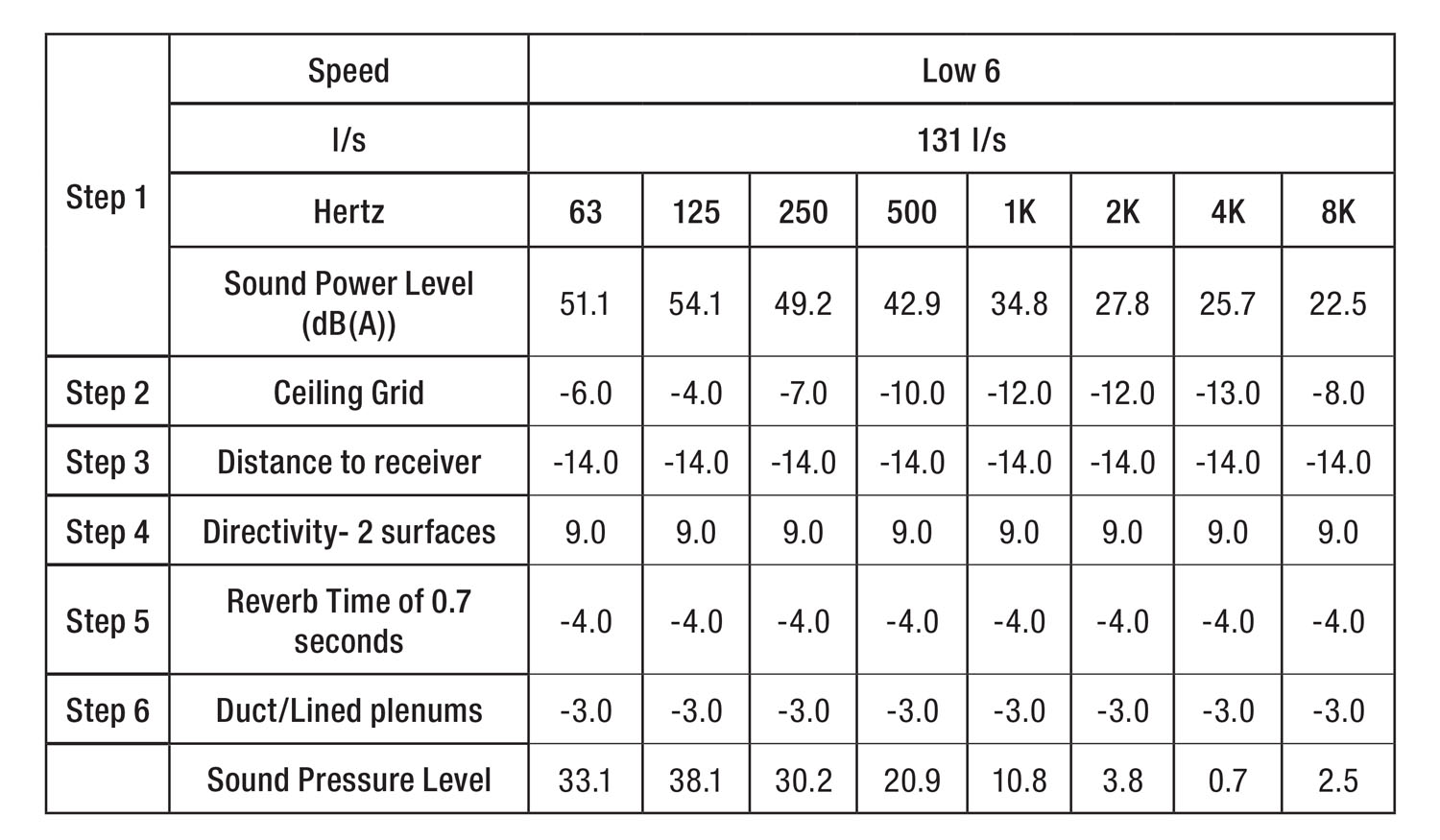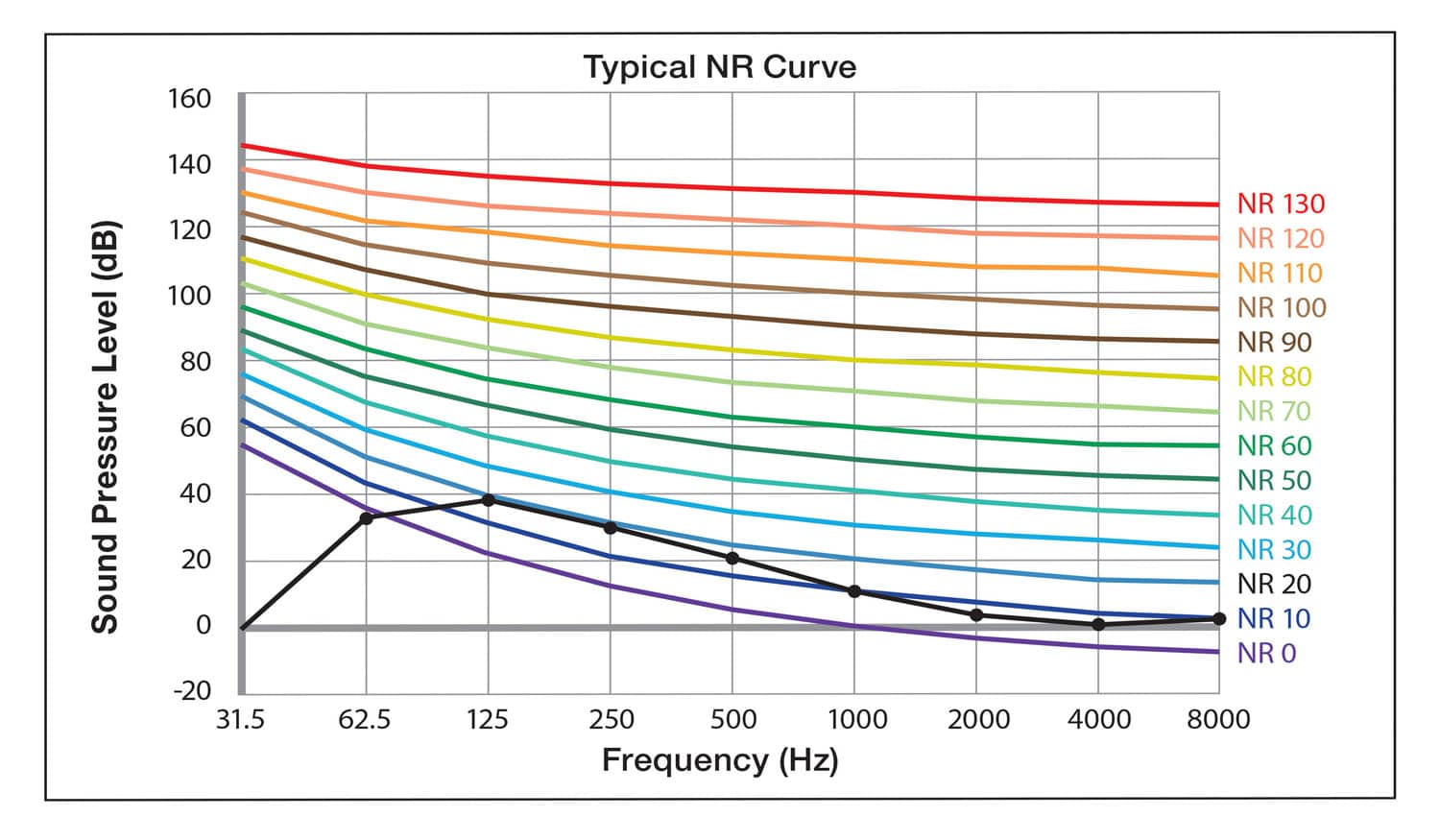Noise Levels

Here is a typical guide to calculate the NR using Sound Power Levels provided
Step 1: Take the Sound Power level of the FCU at the speed that you are using. See example below.
Step 2: Deduct losses for ceiling type i.e. plasterboard ceiling or T bar ceiling. If your project has no ceiling and the FCU is exposed then ignore this step. You can get the exact insertion based on the installed ceiling on your project.
Step 3: Deduct the insertion losses for the distance to the receiver- this is generally stated at 1.5m.
Step 4: Directivity- Is the FCU installed on the ceiling slab and near other surfaces (e.g.) located on the ceiling in a corner or near to a wall? Typically for two surfaces add 6dB and for three surfaces add 9dB across the spectrum.
Step 5: Reverberation time- What size is the room where the FCU is installed and what are the furnishings like? We have allowed for an area of 200m3 with soft furnishings. This would give a typical reverb time of 0.7 seconds and a 4dB reduction across the spectrum. For a room with hard surfaces and no soft furnishings, allow a typical reverb time of 1-2 seconds. 1 second reverb = 2dB reduction across the spectrum/1.5 second reverb = 0dB reduction across the spectrum/2.0 second reverb = 1dB addition across the spectrum.
Step 6: If the FCU has duct and lined plenums you can typically deduct -3dB across the spectrum.
Step 7: Typical NR Curve shows the FCU will achieve NR20.

